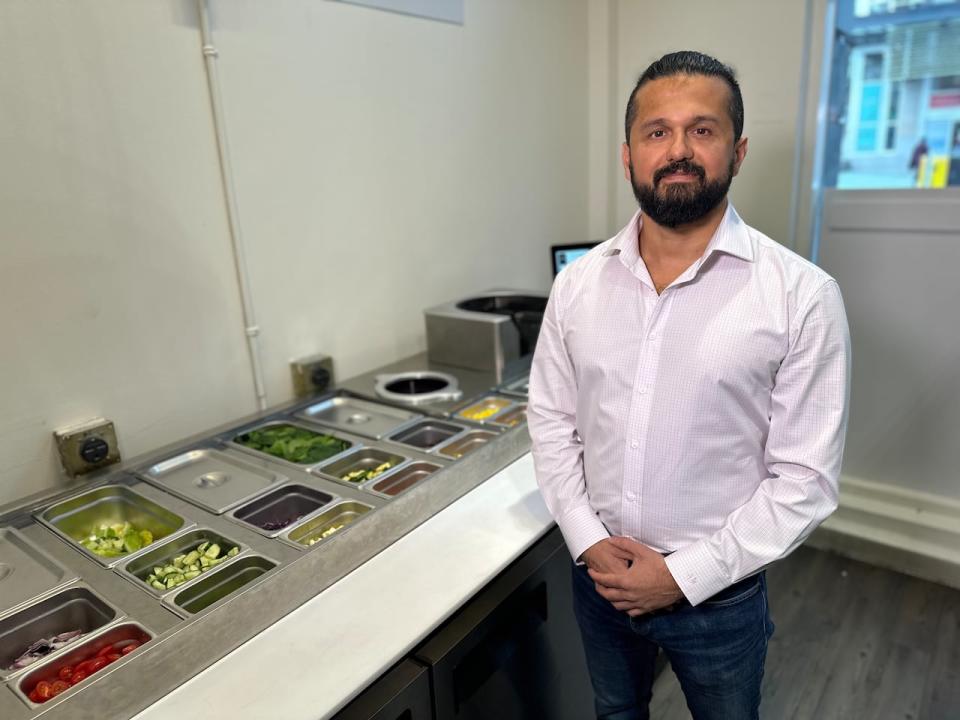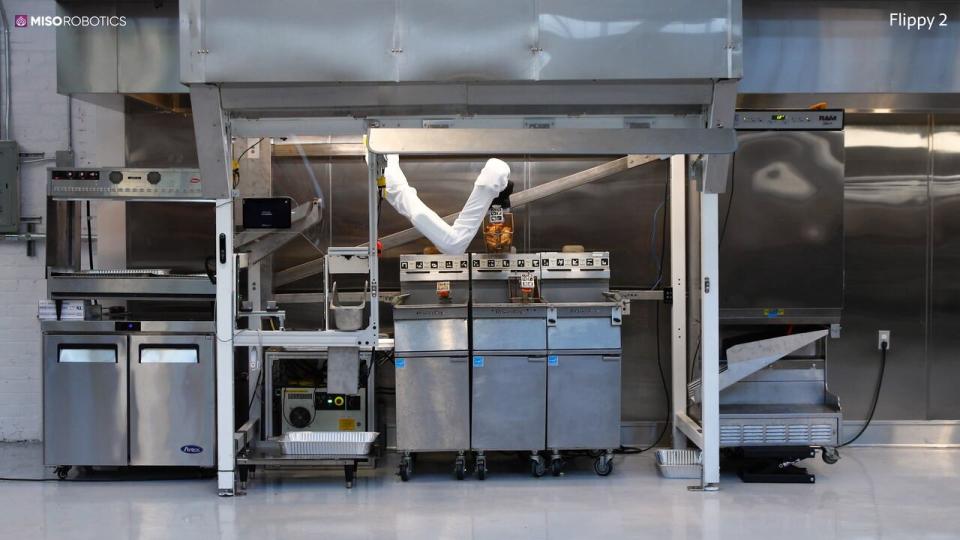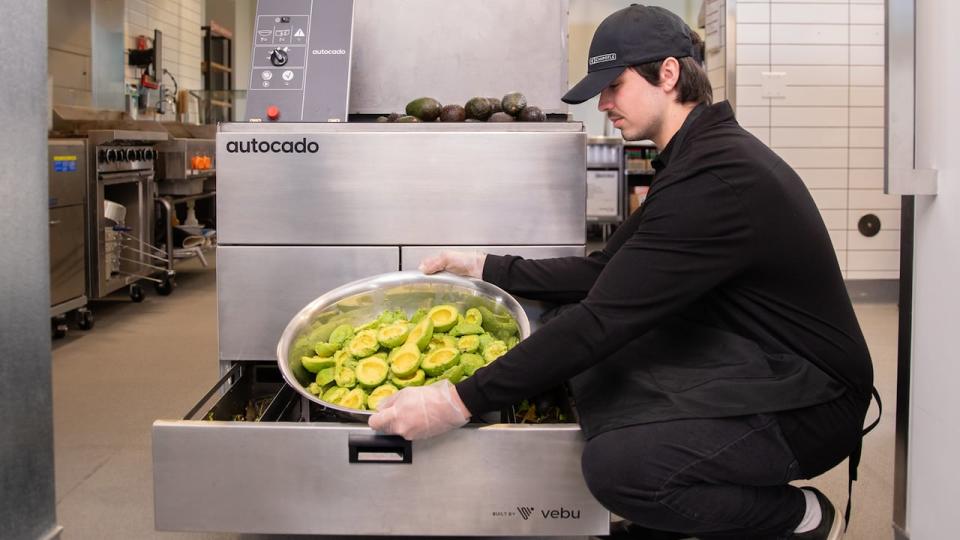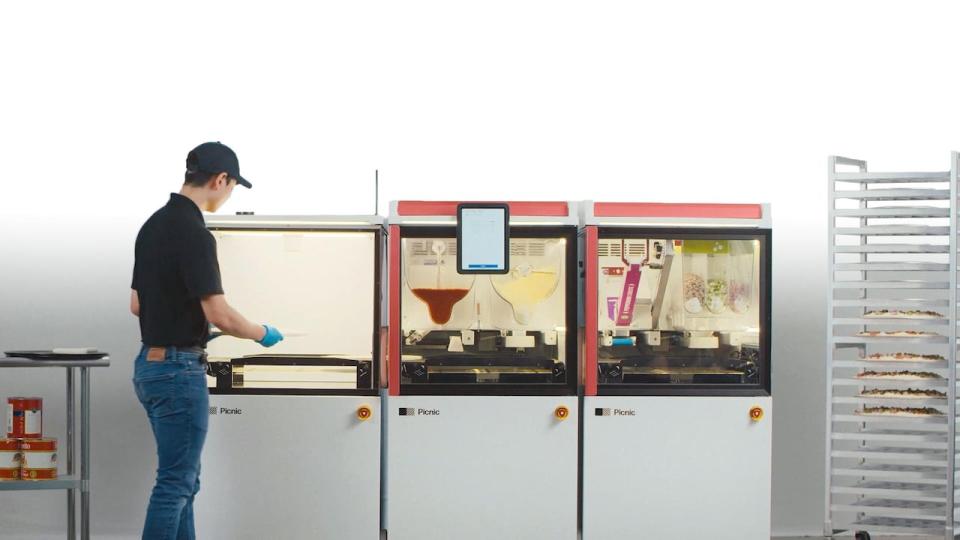Flippy makes burgers, Chippy cooks fries and Remy serves salads. Customers may not even notice it, but robots are becoming increasingly common behind the counter of fast food kitchens.
At Food Republic, a quick-service restaurant in Vancouver, Remy looks like a giant stainless steel box. Inside, it is instructed to divide each salad ingredient into portions. Cucumbers fall through a tube into a takeaway bowl, which then moves along a conveyor belt to catch the next topping.
Ashkan Mirnabavi is co-founder of Canadian robotics startup Cibotica, which designed Remy using artificial intelligence and machine learning. He describes it as an automated assembly line that can make as many as 300 salads per hour. “Every ingredient is dosed accurately and precisely because of that core technology,” he said.


Ashkan Mirnabavi is co-founder of Vancouver robotics startup Cibotica, which created the salad assembly robot Remy. (Nicholas Allan/CBC)
Mirnabavi, a former restaurateur himself, said Remy can help businesses create consistency, reduce customer wait times and reduce labor costs by 33 percent. Cibotica allows customers to “hire” Remy for a monthly subscription fee and he said demand is promising.
“We have received many inquiries and purchase orders from companies in the US and Canada.”
Remy is far from the only robot in fast food kitchens. As companies struggle with workforce shortages and look to cut costs, more and more major chains are turning to automation to make food faster and cheaper.
Robots on the rise
Since the pandemic, fewer people have wanted the fast-paced and demanding frontline jobs of the restaurant industry.
According to a report from the Canadian Center for Policy Alternatives, more than 250,000 restaurant workers quit to find new careers by 2021.


Flippy is a robot developed by Miso Robotics in California. (Miso-robotics)
Amid these workforce shortages, labor costs have also increased. Companies have looked for solutions to fill this gap, and many are designed to replace human workers on the assembly line.
Domino’s is testing a pizza machine at one of its locations in Berlin. White Castle has implemented giant mechanical arms to flip burgers (nicknamed Flippy) and cook fries (Chippy) at locations across the US. In a pilot restaurant in Fort Worth, Texas, almost all robots serve McDonald’s customers.
The American salad outlet Sweetgreen is going all-in. In 2023, CEO Jonathan Neman told investors he expects every location to be automated within five years.
Make fast food faster
Chipotle Mexican Grill is also buying and testing a few options that could roll out to its Canadian locations later this year.
“They can perform the same task over and over again with a very high degree of efficiency and success,” said Curt Garner, Chipotle’s chief technology officer.
The California-based company is experimenting with a machine called Autocado. It slices, pits and scoops avocados, allowing you to serve a batch of guacamole in half the usual time. There are plans to add machine learning capabilities to Autocado, which will eventually allow the company to assess the quality of avocados without human assistance.
Garner said employees are then free to focus on less repetitive tasks and transition to other kitchen or customer service roles.


Chipotle Mexican Grill unveiled the Autocado, a robot that slices, cores and scoops avocados. (Chipotle Mexican Grill)
Garner said the job will become easier so the remaining staff can spend more time interacting with guests. He doesn’t expect robots to replace all workers at Chipotle, as there are some things machines can’t do.
“They don’t learn like humans. They are not as adaptive to changes in the environment.”
While the technology is still expensive, fast food chains are beginning to weigh the benefits of staff who can work around the clock and not call in sick. Garner said a device like Autocado pays for itself in one to two years.
Restaurant jobs ripe for automation
Restaurants have traditionally lagged behind other industries in the adoption of industrial robots, although they could potentially replace 82 percent of jobs, according to a forecast by industry consultant Aaron Allen & Associates. Some experts suggest that the workforce is on track to shrink permanently.
Dr. Robin Yap, professor of management at George Brown College, said that while the technology will increase opportunities for innovation, he warned that it is critical for employers to plan to reskill their workers.


Domino’s is testing a pizza assembly machine made by a startup called Picnic at one of its locations in Berlin. (Picnic)
Yap suggested that companies could move human workers into more customer-facing roles or into management positions. They could also provide employees with technical training.
“Maybe now they become the technicians for the robots, because at the end of the day you need maintenance. I mean, these are machines, they don’t run forever,” he said.
Yap predicted that robots will be ubiquitous within a few years, though he said that throughout history, workers have been able to adapt to the disruption.
“When we had a typewriter, when we had the telephone… all those things have shifted work. So it’s not new that there will be shifts in where… people are needed.”
With files from Laura MacNaughton